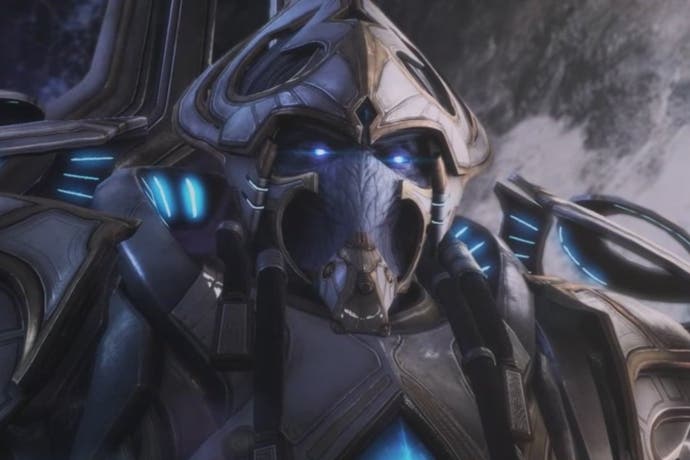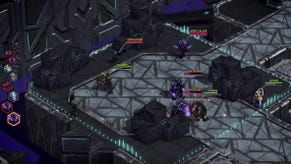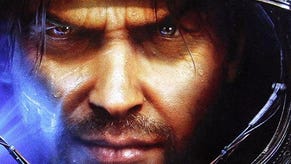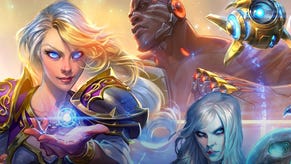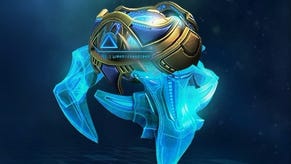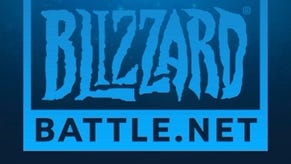Legacy of the Void's campaign seems a fitting end to StarCraft 2
And a swan song for big budget RTS?
The protoss finally have their turn. Those that must construct additional pylons have waited more than five years now for their own StarCraft 2 campaign - an unfortunate side effect that comes with splitting the story across three parts. But here we are, at the very end, and that brings with it some different expectations. Not only will Legacy of the Void conclude a story that first began in 1998, but this is also Blizzard's last chance to show players what a StarCraft 2 campaign can achieve.
"With each expansion," explains lead producer, Tim Morten, "the team has learned more and more, and for Legacy of Void that means a lot of unique mission mechanics. We've designed one encounter to work like a tug of war, where you'll need to have more units behind your hero to progress, but if you have less than the enemy you'll fall back. There's a mission in which you build your base on a space platform that's actually moveable, and then move that around the map to acquire resources. Really on a mission by mission basis, there's a lot more going on here."
These sound like interesting examples, but as I sat down to play around with the new campaign I was just delighted to see the protoss getting some love from Blizzard's cinematic department. We're used to seeing Zeratul pop up from time to time, but Legacy of the Void starts big: the protoss returning to Aiur, their lost homeworld. The opening shot centers on the planet's surface and slowly pulls back to reveal an entire armada of protoss ships. Aboard each vessel, a group of templar stand and look down towards the home that was taken from them. The StarCraft story isn't for everyone, but if you've bought into it at all, this is the stuff that gives you goosebumps.
It does feel a little strange to go from that cinematic, designed to conjure up memories of the protoss (and the player's) struggle thus far, to a mission that then needs to act as the game's tutorial. Legacy of the Void will be sold as a standalone expansion and I suppose it needs this more than ever, but I would have liked something a little more from the reclamation of Aiur than being shown how to select my units and then attack moving my way through a series of zerg-infested objectives. To give the mission some credit, you do end up controlling an obscene number of protoss by the end of it - at least it looks like you're controlling an invasion force, even if you don't really need to do an awful lot.
Thankfully, we soon jumped ahead to a couple of later missions and here there was plenty of room to experiment. I didn't get to play around with any brand new units (aside from the powerful 'Monolith Tower' that packs some real serious range), but I did have the chance to customise my units somewhat between missions. The protoss are made up of a number of different factions and as you gain their support throughout the campaign, you can make use of their preferred fighting styles. From a player's perspective this means that, for example, your zealots can be customised with a whirlwind attack or perhaps the ability to dash through your own units. I picked the whirlwind. It looked quite flashy.
I was interested to hear how this idea of opposing factions would be represented in the story itself, although Blizzard was cautious of promising too much here. "There's definitely conflict between the faction leaders throughout the campaign," explained Morten, "but you'll see that play out during the cutscenes rather than the gameplay. From a story perspective, you're making decisions in terms of what order to play the missions. By the end of the game you'll have played all of them, but there's some choice on your part in what order you experience them."

Aside from unit customisation, you'll also want to think about how you kit out your flagship, The Spear of Adun, between missions. You can unlock some really interesting abilities to be used on the battlefield should you need them, ranging from orbital strikes to my personal favourite: the option to immediately spawn a pylon anywhere on the map (as long as it's not covered by the fog of war). Combine this emergency pylon with a couple of warp gates and suddenly you can be reacting to all sorts of problems, wherever they're happening. I found myself encouraged to use these abilities pretty frequently, as they're dependent on a separate energy meter that's constantly recharging (although at a slow enough rate to not feel overly distracting). Really, they're just quite a lot of fun to use and help paint the image of your battle being assisted by a protoss arkship waiting in orbit. That's pretty cool.
And you know what? That's an important aspect of the StarCraft 2 experience. Safely removed from the world of competitive multiplayer and pesky concerns like 'balance', Blizzard have the opportunity to show off a little. These campaigns aren't just about controlling your favourite race, they're about feeling like you're their very last hope. This means giving the player control of an entire invasion force in their first mission (even if they don't get to do much with it) and letting them pause the game every so often to call in orbital strikes from their gigantic protoss starship. This battle is important and so are you: that's what Blizzard's campaigns are all about.
I walked away confident that Legacy of the Void would provide the StarCraft 2 finale that I wanted, but also feeling a little melancholic that it was about to end. For my money, the last five and a half years haven't seen another RTS campaign come even close to matching what Blizzard has offered and with their fingers now in so many different pies, what happens if their priorities shift?
"Strategy and RTS in particular are such a fundamental part of Blizzard's DNA," said Morten, in what I'd like to think was a reassuring tone. "There's no specific plan for what's next, but there is a tremendous amount of love within the company for the genre."
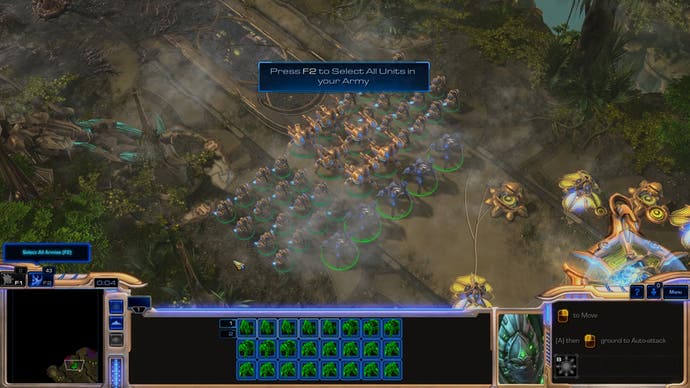
Of course we're going to see Legacy of the Void live on through its competitive multiplayer. For many these campaigns are just a distraction from the main course and it's those players that act as the lifeblood for this series. It's not (usually) singleplayer speedruns that have thousands flocking to watch this game on Twitch, although there is a sense that even there StarCraft 2 has peaked, another victim to the rise of the MOBA.
"From my perspective, it really feels like perception rather than reality," argues Morten. "Esports as a whole has really grown and that's been a good thing for StarCraft - we had our biggest attendance at WCS finals last year. We've had more regular competitions over the course of the year than we've ever experienced. StarCraft esports as a whole is extremely healthy and that does map to this incredibly stable playerbase for multiplayer that sticks around after the game launches. While I think the attention of fans is a little more split, with players looking at other things including other great Blizzard titles, StarCraft is still going strong."
